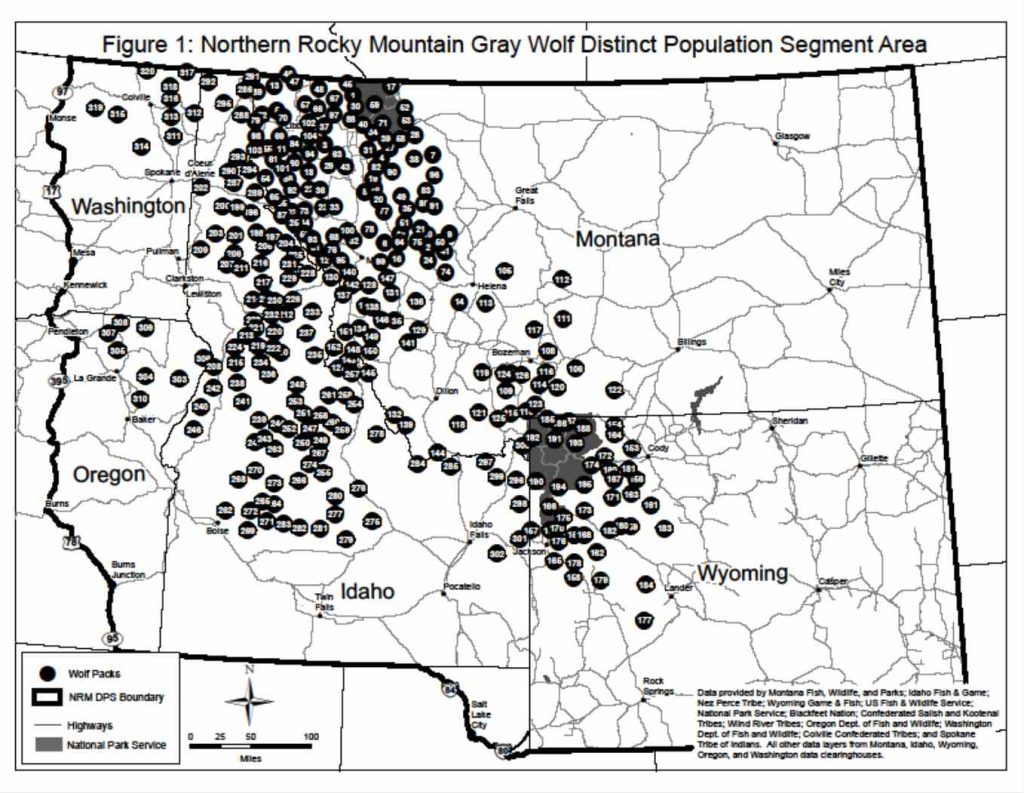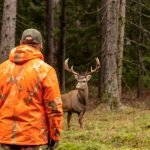After being exterminated from the Lower 48 states, the magnificent gray wolf returned to Washington, sparking a contentious discussion on its role in the environment and society at the junction of hunting season and wildlife conservation. So, it is essential to comprehend the facts in this complicated environment. Let us introduce Washington Residents Against Wolves (WARAW), a citizen-led group that promotes efficient wildlife management, compassionate treatment of animals, and prudent use of the state’s natural resources.
About Washington Residents Against Wolves (WARAW): Standing for Balance
WARAW, founded in 2014, that promoted a systematic strategy for managing wolves. They supported:
• Humane Treatment: Treat wolves with respect and prioritize non-lethal deterrents to safeguard livestock and guarantee animal welfare.
• Effective Wildlife Management: Science-based approaches to wildlife management consider the ecosystem as a whole rather than specific species.
• Private Property Rights: Preserving landowners’ rights and means of subsistence, guaranteeing that cohabitation with wolves does not impair personal liberties.
• Safe Recreational Access: Ensuring everyone can appreciate Washington’s natural beauty by protecting the wilderness for responsible outdoor enthusiasts.
• Preventing Domestic Animal Attacks: Guarding pets and livestock by taking preventative steps to reduce interactions with wolves.
Beyond just advocating, WARAW thinks that responsible cohabitation is achievable. They provided tools for livestock protection, educate the public on the biology of wolves, and work with partners to develop solutions that benefit wolves and communities.
WARAW Objective
WARAW demanded the Washington State Fish and Wildlife Department (WDFW) to move from “social management” to data-driven wolf management. WARAW sought Eastern Washington ungulate counts and wolf pack prey demands to address concerns that wolf management was not aligned with the state wolf management plan. The group questioned the accuracy of prey statistics and stressed the need of including cougars, bears, and coyotes. In addition, WARAW was confused by the lack of environmental studies for wolf translocation, a crucial state recovery aim. They argued that wolf reintroduction management should be based on evidence rather than passion or politics.
Washington’s Wolf Divide: A Clash of Values and Ecosystems
The comeback of the majestic gray wolf in Washington state has ignited a bitter divide between rural and urban areas over coexistence and management. The advocacy group Washington Residents Against Wolves (WARAW), which aims to reduce the wolf population, is at the center of the debate.
WARAW previously back around 2014 put up controversial billboards near the Idaho border declaring “Endangered? No. Dangerous? Yes. Good for Washington? Not!” Many rural residents shared WARAW’s worries about public safety, dwindling elk herds, and livestock losses from wolf attacks.

However, ecologists dispute these claims. They argued wolves avoid humans and play a crucial role in maintaining healthy habitats. Wolf predation helps prevent overgrazing by elk that damages meadows and grasslands.
This heated disagreement highlights the widening rural-urban rift in the Pacific Northwest. Rural populations believe their urban counterparts, who advocate for wolf preservation, ignore the realities of living near wolves. These include dangers to cattle and humans that city dwellers are unfamiliar with. Wolf defenders reply that Washington is part of the wolves’ native range, and their presence improves ecosystems where elk would otherwise deplete vegetation.
The wolf debate reflected conflicting philosophies, land use priorities, and visions for Washington’s natural landscapes. Finding solutions requires open and respectful dialogue across perspectives and a commitment to evidence-based policies that protect wolves and rural livelihoods. Only then can Washington mend divisions and secure a peaceful future for all who call this great state home.
How Anti-Wolf Propaganda Endangers the Species’ Survival
Fear-mongering and disinformation are effective tactics that often skew public opinion and obstruct wolf recovery initiatives. Science-based management strategies are undermined by sensationalized accounts of wolf attacks and overstated economic effects, which stoke animosity and hatred.
Fighting False Information:
• Fact-checking assertions: Review references, confirm data, and depend on reliable scientific research.
• Comprehend wolf ecology: Acknowledge wolves’ modest influence on cattle numbers and their importance to the health of ecosystems.
• Encouraging cohabitation tactics: Encourage preventative actions and non-lethal deterrents to reduce violence.
These actions guarantee appropriate wolf management practices and educated public conversation.
WARAW’s Solutions for Responsible Wolf Management
WARAW developed wolf management solutions that protect forests, mitigate economic harm to rural communities, treat wild and domestic animals humanely, and carefully regulate wolf populations within prey and habitat constraints. They provided the following recommendations :
Empower Local Control: Encourage more local control over the management of predators by highlighting the significance of human health and safety in rural regions.
Informed Advocacy: Through print and online materials, conferences, and seminars, we empower members to be informed supporters of responsible wolf management.
Balanced Wolf Pack Management: Promote wolf pack management that keeps them within the limits of their prey base while taking into account both customary hunting methods and the present rate of predator-prey consumption.

Delisting the Grey Wolf in Washington: In order to reflect the species’ current conservation status, in support of removing the Grey Wolf from the Washington State Endangered Species List.
National Delisting Effort: Recognize the necessity for region-specific conservation measures and push for the removal of wolves throughout the lower 48 from the U.S. Fish and Wildlife Endangered Species List.
Analyzing Wolf Management’s Research Issues: A Call for Change?
According to research by the Washington Department of Fish and Wildlife (WDFW), the state’s existing wolf management strategies must be revised to control wolf numbers. The study listed several causes, such as:
• Ineffective hunting and trapping techniques: The existing system mainly depends on these tactics, which often fall short of drastically reducing the population of wolves.
• Limited public support for deadly control: Non-lethal cohabitation tactics are becoming increasingly popular in Washington.
• Insufficient attention to habitat management: Long-term population stability depends on preserving and rebuilding wolf habitat.
The study’s conclusions urge a change in wolf management practices, emphasizing coexistence tactics, habitat preservation, and a more comprehensive and scientific approach.
Washington Citizens Opposed to Wolves: Seeking a Resolution
WARAW takes an active part in:
• Communication with those affected: Working together to identify common ground among ranchers, environmentalists, legislators, and local communities.
• Advocating for science-based policies: encouraging management strategies based on thorough study and long-term viability.
• Educating the public: Busting misconceptions, providing accurate facts, and promoting knowledge of wolf ecology and coexistence tactics.
Their work opens the door to a future where wolves and people coexist in Washington’s wilderness.
Spokane billboard campaign launched by anti-wolf group: Growing Disputes?
In Spokane, an anti-wolf billboard campaign has sparked debate. The campaign’s deceptive rhetoric and gory visuals polarize the discussion even more and prevent productive discussion.
WARAW highlights the significance of:
• Respectful discourse: Steer clear of aggressive speech and have polite conversations based on facts and evidence.
• Putting solutions first: Working together to develop workable strategies to control wolf populations and cattle predation.
• Giving proper information priority: Refuting false information using open data and reputable studies.
These methods encourage a more fruitful atmosphere for long-term problem-solving.
California’s Wolves: Learning from a Neighboring State
There are essential lessons for Washington to learn from the recent wolf invasion in California. Washington’s approach may benefit from learning from California’s management tactics regarding accomplishments and obstacles.
WARAW supports the following:
• Exchanging best practices: Working with California to create efficient wolf management strategies by learning from each other’s experiences.
• Adapting strategies: Washington’s strategy is customized to its ecological and social setting by drawing on information and lessons from California.
• Constant learning: Keeping an open mind to new knowledge and modifying management techniques in response to continual monitoring and study.
Cross-state wolf management may be complicated, but open communication and mutual learning can help make the process easier.
A Debated Study Boosts the Argument on Wolf Management
Within the wolf management field, research published in the journal “Science” has caused disagreement. According to the study, wolf numbers may affect prey species more than previously believed, which might have a domino effect on the environment.
Some see this as support for more stringent wolf control measures, while others stress the need for further investigation and management techniques tailored to the particular circumstances.
The controversy over wolf control resurfaced during the Washington state push to reduce population.
The continuing effort in Washington to reduce the number of wolves has reignited the discussion over the best management practices. Reducing the wolf population, according to supporters, is essential to safeguarding cattle and preserving the equilibrium with prey populations.
However, detractors contend that the population is not a serious concern at its present levels and that the use of deadly control tactics is both brutal and inefficient. They stress the significance of safeguarding wolves as keystone species and support non-lethal coexisting techniques.
Although there is still much to be determined about Washington’s wolf management policy, one thing is sure: the issue is complex and multifaceted, necessitating a scientific approach that puts human welfare and ecological sustainability first.
Conclusion
The topic of wolf management is intricate and varied. Finding a balanced strategy that preserves wolves and communities requires an understanding of the many points of view, rigorous evaluation of the available data, and support for groups like WARAW who promote responsible solutions. We can secure the future of wolves in Washington and elsewhere by encouraging thoughtful discussion and science-based management techniques.
- 2025 Texas Hunting Season: Latest Dates & New Laws! - March 14, 2025
- Maine Hunting Seasons 2025 New Dates & Limits - March 14, 2025
- Indiana Hunting Season 2025-2026 New Dates & Rules! - February 9, 2025



